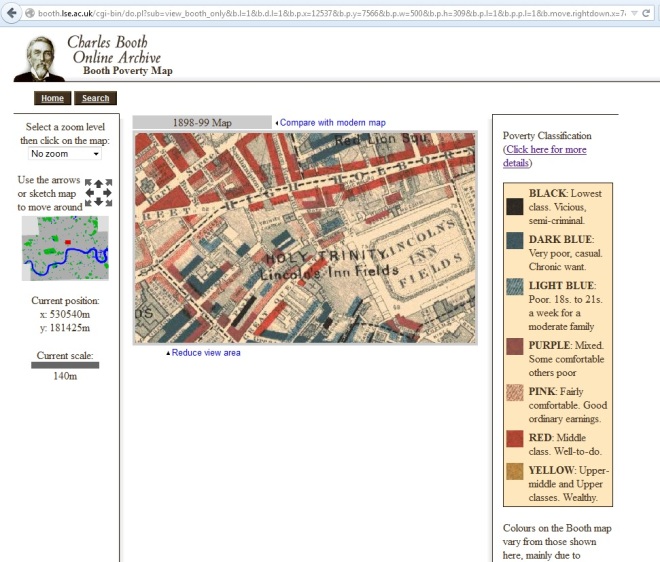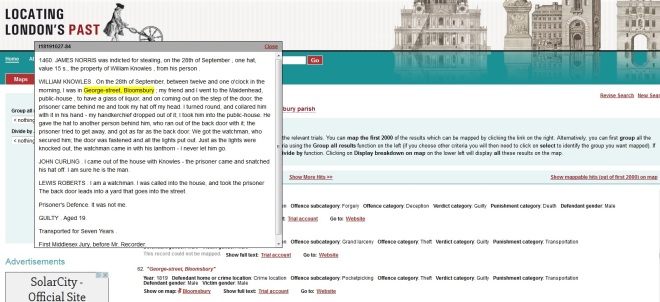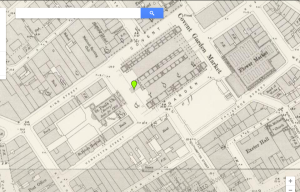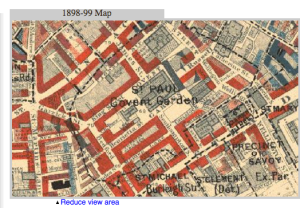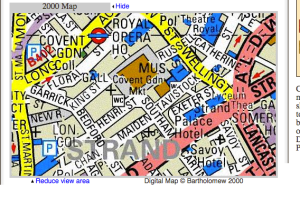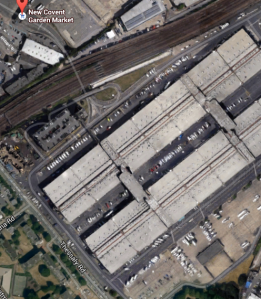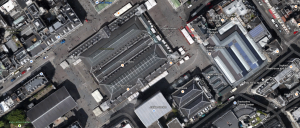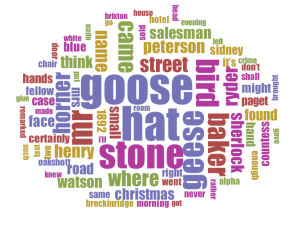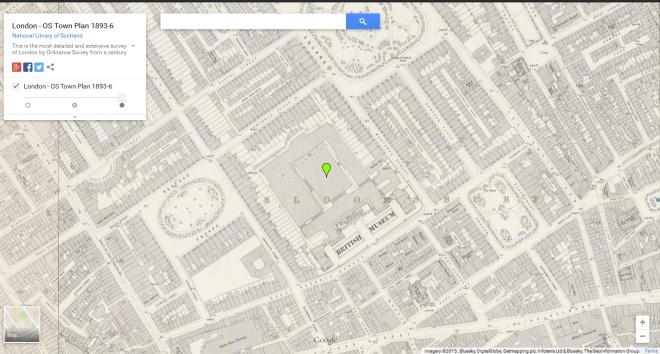 The British Museum is mentioned in the story The Adventure of the Blue Carbuncle when Sherlock Holmes and Dr. Watson are asking the owner of the stolen goose about the place he had bought it. Mr. Baker explains that he is a member of a “goose club”, in which each affiliate would receive a goose at Christmas, after contributing with a small amount of money during the year. Mr. Baker says: “There is a few of us who frequent the Alpha Inn, near the museum – we are to be found in the museum itself during the day, you understand” (in The Adventure of the Blue Carbuncle, p. 5; Arthur Conan Doyle).
The British Museum is mentioned in the story The Adventure of the Blue Carbuncle when Sherlock Holmes and Dr. Watson are asking the owner of the stolen goose about the place he had bought it. Mr. Baker explains that he is a member of a “goose club”, in which each affiliate would receive a goose at Christmas, after contributing with a small amount of money during the year. Mr. Baker says: “There is a few of us who frequent the Alpha Inn, near the museum – we are to be found in the museum itself during the day, you understand” (in The Adventure of the Blue Carbuncle, p. 5; Arthur Conan Doyle).
I have found this specific quotation very interesting, giving concern to what I have discovered about the place in The Booth Poverty Map. It tells us that the area surrounding the British Museum was not that poor. As the map key assigns, the colors shown around the museum correspond to “Middle class. Well-to-do” populations, some wealthy people from “Upper-middle and Upper classes”. People with “good ordinary earnings”, in a “fairly comfortable” situation also used to live in that area (in Booth Poverty Map, Charles Both Online Archive).
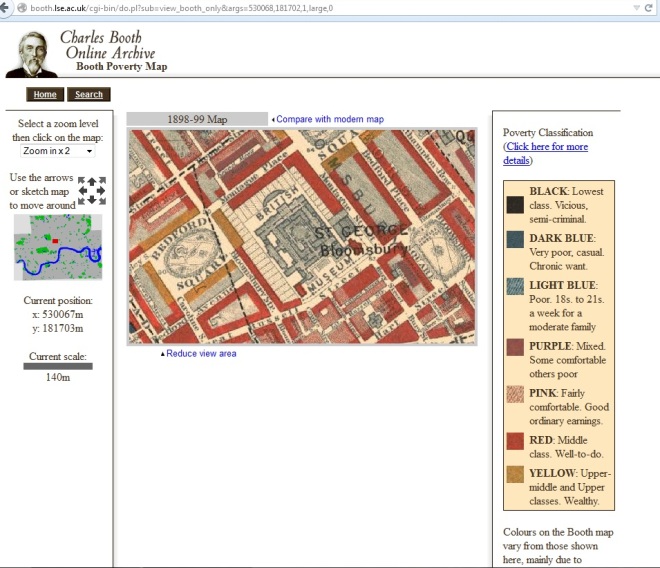 However, if we use the arrows resource to search about the surrounding area, the frame changes. Especially if we go to the north-east, south-east or south-west directions, we find dark and light blue patterns, as the image bellow shows. As the key explains, these colors correspond to “very poor, casual, chronic want situations” (dark blue) and “poor who earned “18s to 21s a week for a moderate family” (Booth Poverty Map, Charles Both Online Archive). However, we can still see significant presence of middle-class families in that area, which suggests that people with really different life styles lived together in the same place. Today it is very unlikely to happen, due to the financial speculation.
However, if we use the arrows resource to search about the surrounding area, the frame changes. Especially if we go to the north-east, south-east or south-west directions, we find dark and light blue patterns, as the image bellow shows. As the key explains, these colors correspond to “very poor, casual, chronic want situations” (dark blue) and “poor who earned “18s to 21s a week for a moderate family” (Booth Poverty Map, Charles Both Online Archive). However, we can still see significant presence of middle-class families in that area, which suggests that people with really different life styles lived together in the same place. Today it is very unlikely to happen, due to the financial speculation.
Combining these two data, I could suggest a reason for the appearance of the British Museum in the story and for Mr. Baker’s sentence as well. As Holmes has deduced from the hat, Mr. Baker is an intellectual middle-class men even though he is probably running into financial difficulties at the moment. As he is an intellectual middle-class men, it is coherent that he frequents the Museum and the surroundings. However, he remarked that “we are to be found in the museum itself during the day, you understand” (in The Adventure of the Blue Carbuncle, p. 5; Arthur Conan Doyle). I had come up with a possible reason for this statement. Even though the area is populated by middle and upper class families, it doesn’t mean that it is safe. Maybe, during the night, the area was occupied by criminals.
Indeed, some crimes used to happen in the area at night. I have found the case of a theft on George Street, located in the same parish where is the British Museum – Bloomsbury. Coincidentally, this is a case of a hat stealing, that happened in 1819. Both victim and defendant were males. You can see the description of the theft on the image bellow. It tells the details of the action, which is particularly interesting. (from Old Bailey Proceedings data set, at Locating London’s Past)
In addition a curiosity about the British Museum: some renowned names used to frequent the Museum’s Library and the reading room: “Sir James Mackintosh, Sir Walter Scott, Charles Lamb, Washington Irving, William Godwin, Dean Milman, Leigh Hunt, Hallam, Macaulay, Grote, Tom Campbell, Sir E. Bulwer Lytton, Edward Jesse, Charles Dickens, Douglas Jerrold, Thackeray, Shirley Brooks, Mark Lemon, and Count Stuart d’Albany” (in Old and New London: Volume 4, The British Museum part 1 of 2, Chapter XXXIX).
